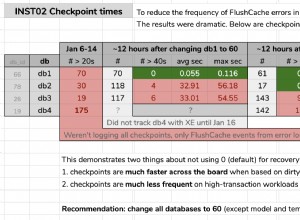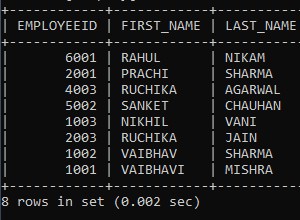Supponendo che:
-
stai eseguendo Postgres
-
un determinato cliente ha sempre esattamente due righe nella tabella
-
hourè di un tipo di dati simile a una data
Quindi un'opzione è usare generate_series() con un'unione laterale, in questo modo:
select t.customer_id, x.hour
from (
select customer_id, min(hour) min_hour, max(hour) max_hour
from mytable
group by customer_id
) t
cross join lateral generate_series(min_hour, max_hour, '1 hour') x(hour)
order by t.customer_id, x.hour
customer_id | hour :---------- | :------------------ X | 2019-04-01 13:00:00 X | 2019-04-01 14:00:00 X | 2019-04-01 15:00:00 X | 2019-04-01 16:00:00 X | 2019-04-01 17:00:00 Y | 2019-04-01 17:00:00 Y | 2019-04-01 18:00:00 Y | 2019-04-01 19:00:00




